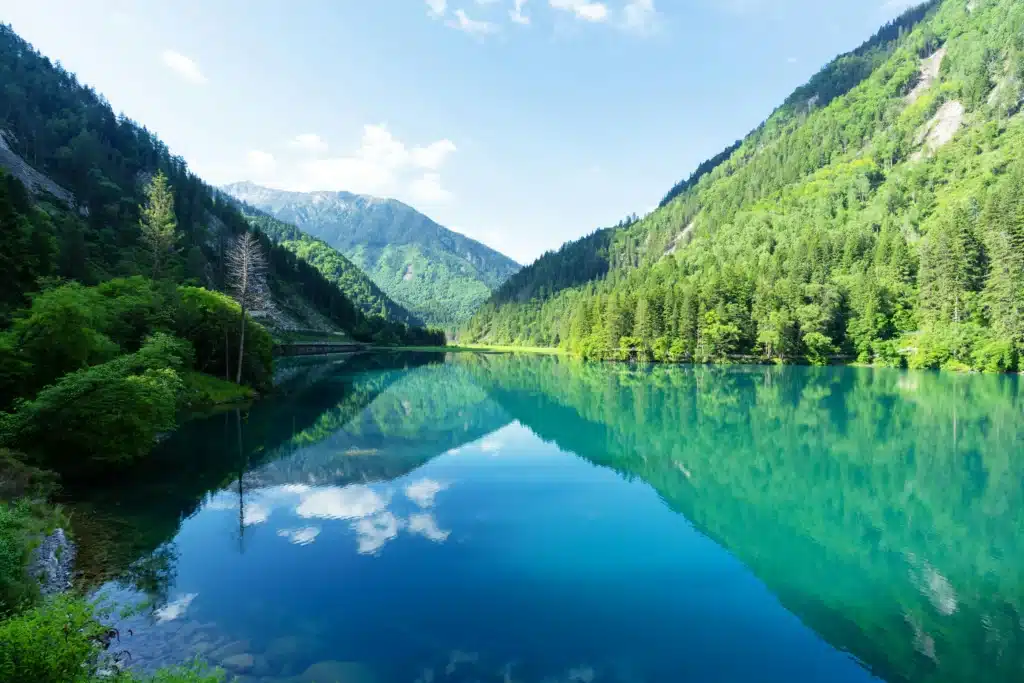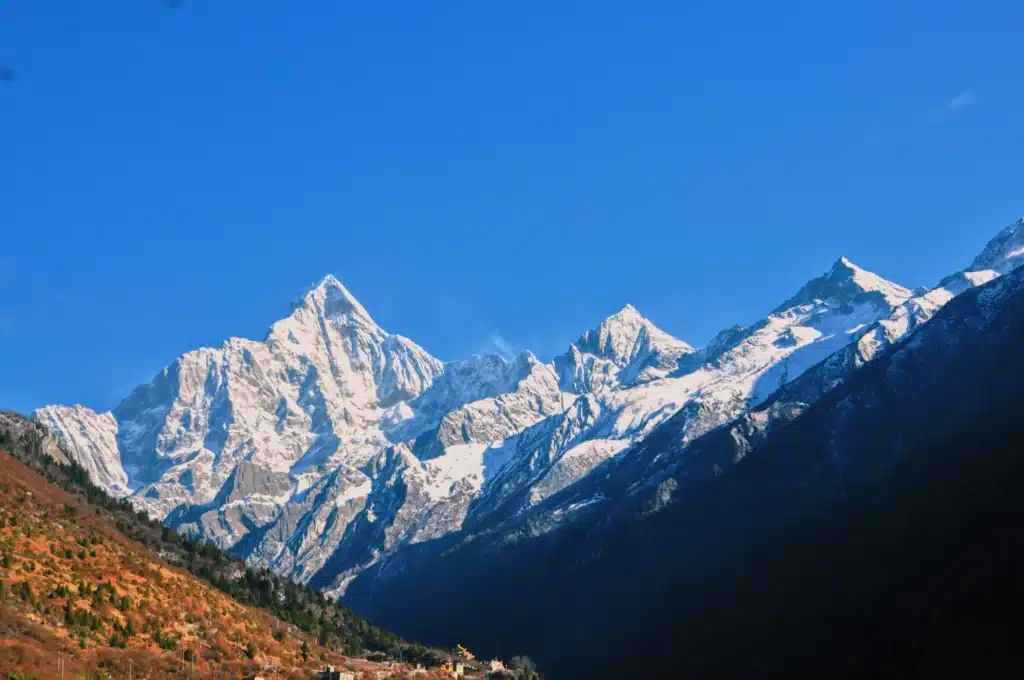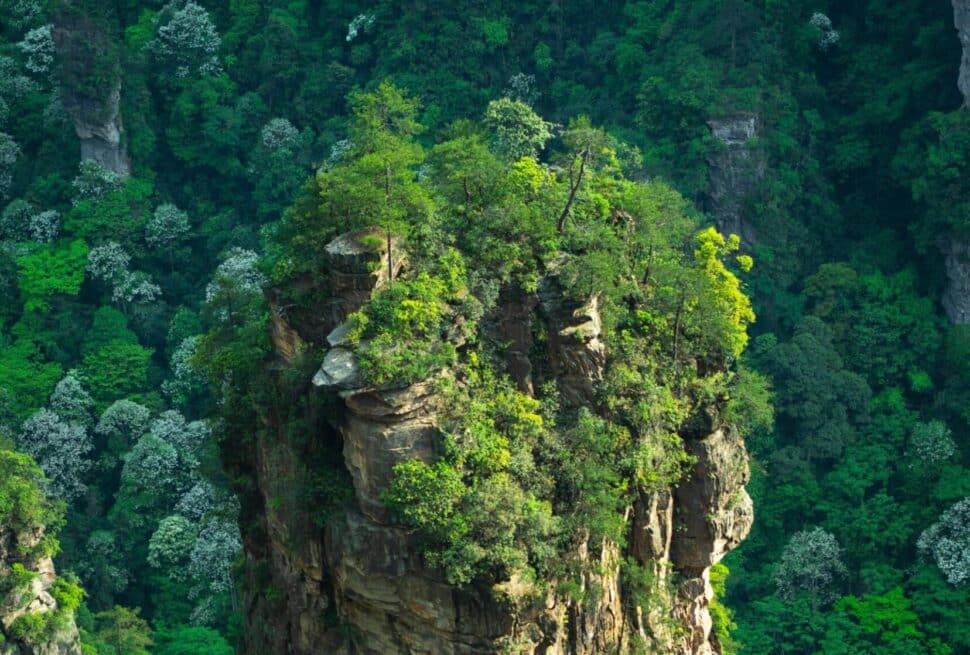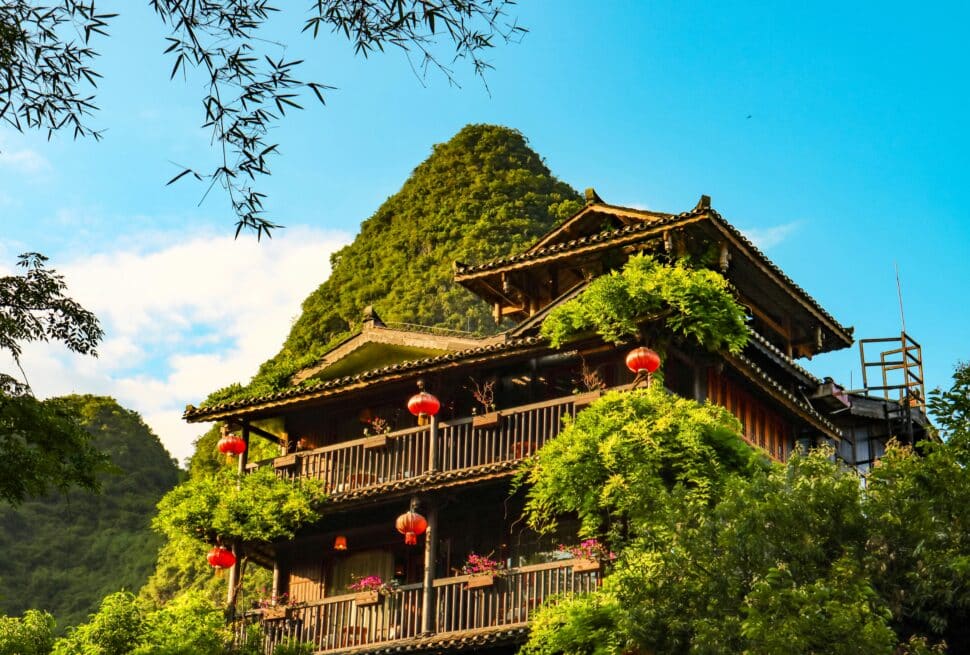When it comes to breathtaking natural landscapes in China, Sichuan Province is an unsung hero. Known for its spicy cuisine and lovable pandas, Sichuan also boasts some of the most stunning nature in all of China. From the emerald lakes of Jiuzhaigou to the colorful pools of Huanglong, and the Tibetan-influenced highlands of Songpan, this region is a paradise for nature lovers.
Whether you’re planning a nature-focused holiday or simply want to get off the beaten path, this guide to China nature (Sichuan) will introduce you to its must-see destinations and how to experience them in the best way possible.
Table of Contents:
- Why Explore Sichuan’s Natural Wonders?
- Top Natural Destinations in Sichuan
- How to Visit These Places
- What to Pack
- Travel Tips
- Experience Sichuan Nature with Ease
Why Explore Sichuan’s Natural Wonders?
Sichuan is one of China’s most geographically diverse provinces. Home to part of the Tibetan Plateau, lush forests, glacier-fed lakes, alpine valleys, and sacred mountains, it’s a wonderland for hiking, photography, and cultural exploration.
What makes nature in Sichuan particularly special is how well-preserved and varied it is—often far from mass tourism and offering an authentic connection to both landscape and culture.
Top Natural Destinations in Sichuan

1. Jiuzhaigou Valley
Often referred to as “Fairyland on Earth,” Jiuzhaigou National Park is a UNESCO World Heritage Site in northern Sichuan known for its dazzling palette of turquoise lakes, snow-capped peaks, and ancient Tibetan villages. Its biodiversity and pristine ecosystems make it one of China’s most treasured national parks.
Highlights include:
- Five Flower Lake (Wuhua Hai): With stunning shades of turquoise, green, and yellow, this shallow lake has a crystal-clear bottom that reveals sunken tree trunks, creating a surreal, dreamlike effect. The lake is fed by underground streams and is one of the most photographed spots in the park.
- Nuorilang Waterfall: At 270 meters wide and 24.5 meters high, Nuorilang is one of the widest highland waterfalls in China. It’s especially majestic in spring when snowmelt amplifies its flow. The surrounding area is also a popular photo stop in autumn due to the golden foliage.
- Zharu Valley: A lesser-known part of the park, this area offers multi-day trekking routes and insights into Tibetan Buddhism through the Zharu Monastery and encounters with local Tibetan villagers.
📅 Best time to visit: September to October for golden forests, crisp weather, and clear skies. Summer is lush but rainier, and winter offers snowy landscapes with fewer crowds.

2. Huanglong Scenic Area
A mesmerizing blend of geology and spirituality, Huanglong (Yellow Dragon) is famous for its calcite travertine pools that cascade down a mountain like scales of a mythical dragon. At an average elevation of 3,500m, it’s not just beautiful, but otherworldly.
Key attractions:
- Colorful Pools (Huanglonggou): Over 3,400 terraced pools filled with mineral-rich water reflect hues of blue, green, and gold depending on the season and sunlight. They stretch along a 3.6 km boardwalk that winds its way up to the temple.
- Huanglong Temple: This centuries-old Buddhist temple lies at the top of the trail, offering spiritual context and stunning views of the surrounding valleys and peaks.
📅 Best time to visit: May to October, with autumn offering the best visual contrast of golden forests against the turquoise pools.

3. Mount Siguniang (Four Sisters Mountain)
Located in Aba Tibetan and Qiang Autonomous Prefecture, Siguniangshan consists of four distinct peaks, the tallest reaching 6,250 meters—known as the “Queen of Sichuan’s Peaks.” It’s part of the Qionglai Mountains and offers dramatic alpine scenery.
Valleys to explore:
- Shuangqiao Valley: Accessible by shuttle bus, this is the easiest and most scenic route for casual hikers or families.
- Changping Valley: Offers moderate trails and spectacular views of the peaks. Great for overnight camping and star-gazing.
- Haizi Valley: Challenging trails and fewer tourists. Perfect for experienced hikers seeking solitude.
📅 Best time to visit: April to June (wildflower season) and September to November (golden foliage and clear skies).
4. Songpan Ancient Town
Located at 2,867 meters above sea level, Songpan is more than just a stopover—it’s a gateway to Tibetan culture and stunning alpine scenery. Once a strategic military outpost during the Tang and Ming dynasties, its well-preserved ancient city walls and gates transport you back in time.
Top experiences:
- Horseback Treks: Join guided rides into the nearby hills, rivers, and meadows—a tradition dating back to when local Tibetans offered horse services to travelers.
- Tibetan Homestays: Experience authentic rural life, prayer flag-draped homes, and yak-butter tea shared around the fire.
📅 Best time to visit: June to early October when meadows are in bloom and skies are generally clear.

5. Yading Nature Reserve (Access via Sichuan)
Though located just across the Sichuan border in Daocheng County of Yunnan, most travelers reach Yading from Chengdu or Kangding, making it relevant to Sichuan itineraries.
Known as the “Last Shangri-La,” Yading is home to three sacred snow-capped peaks, Milk Lake, and Five-Color Lake, each considered holy in Tibetan Buddhism.
Why it’s worth it:
- Unparalleled Scenery: Towering mountains reflected in crystalline lakes at over 4,000m altitude.
- Pilgrimage Culture: Local Tibetans often circumambulate the peaks as a spiritual journey.
📅 Best time to visit: May-June for snow-capped beauty, and September-October for colorful forests and cooler weather.
How to Visit These Places
Visiting Sichuan’s nature spots – like Jiuzhaigou, Huanglong, and Songpan – requires a bit of planning, especially as these destinations are located in mountainous, remote areas. Here’s how to get there and make the most of your journey:
By Air
- Jiuzhai Huanglong Airport (JZH) is the main airport serving the Jiuzhaigou-Huanglong area. It connects to major cities like Chengdu, Xi’an, and Chongqing.
- 🚕 From the airport, it’s about 1.5 hours to Huanglong and 1.5–2 hours to Jiuzhaigou by car.
- ✈️ Note: Weather can cause delays here, especially in winter months.
By Private Transfer or Driver
For the most flexibility and comfort, especially if you’re visiting multiple sites, hiring a private car with driver is highly recommended. This allows for:
- Customized stops at scenic viewpoints.
- Flexibility in travel time and pace.
- Ease of navigating remote roads and villages.
Next Level China can arrange vetted, local drivers who are familiar with mountain routes and comfortable hosting international travelers.
By Long-Distance Bus
Budget travelers may consider buses from Chengdu to Songpan or Jiuzhaigou, which take around 8–10 hours. While cheaper, they can be tiring and are not ideal for tight schedules.
Local Exploration
In Songpan, guided horseback treks into the surrounding meadows and mountains are a memorable experience and a nod to local Tibetan traditions.
At Next Level China, we help travelers access these destinations with customized itineraries that handle all logistics—including transportation, local guides, and accommodation.

What to Pack
Given the region’s altitude, variable weather, and rugged terrain, packing smartly is essential. Here’s a breakdown of must-have items:
🧥 Clothing
- Layers are key: Temperatures vary widely from day to night.
- Thermal base layers if visiting outside summer.
- Waterproof shell or jacket – weather can change quickly in the mountains.
- Hat and gloves – yes, even in spring or autumn!
🥾 Footwear
- Sturdy hiking boots with ankle support for rocky or muddy trails.
- Camp shoes or sandals for relaxing in the evenings.
☀️ Essentials
- High SPF sunscreen and lip balm – UV exposure increases with altitude.
- Polarized sunglasses to protect your eyes at high elevations.
- Portable power bank – power outages or long treks are common.
🩺 Health & Safety
- Altitude medication (if needed): Many areas sit above 3,000m (9,800 ft).
- Basic first-aid kit with motion sickness tablets and stomach meds.
- Water purification tablets or filter bottle for treks.
📸 Gear
- Camera with extra batteries – you won’t want to miss a single view!
- Offline maps or translation app (if traveling without a local guide) – cell service is not always reliable.
Travel Tips
- Altitude: Some areas are above 3,000m. Take it slow and stay hydrated.
- Connectivity: Mobile service can be spotty; download maps offline.
- Cultural sensitivity: Many areas are home to Tibetan communities – be respectful of customs and photography rules.
Experience Sichuan Nature with Ease
Planning a trip to Sichuan’s natural wonders isn’t always simple – remote locations, changing road conditions, and a language barrier can make logistics tricky.
That’s where we come in.
At Next Level China, we specialize in personalized itineraries that blend:
- Authentic nature experiences in places like Jiuzhaigou, Songpan, and Mount Siguniang
- Comfortable travel logistics, including local guides and private transport
- 24/7 bilingual support throughout your journey
- Cultural immersion and responsible tourism
Whether you want a photography-focused expedition, a relaxing getaway in the mountains, or a hiking-packed adventure, we’ll design a seamless journey that matches your style.
📩 Get in touch today for a custom itinerary – no commitment needed!




